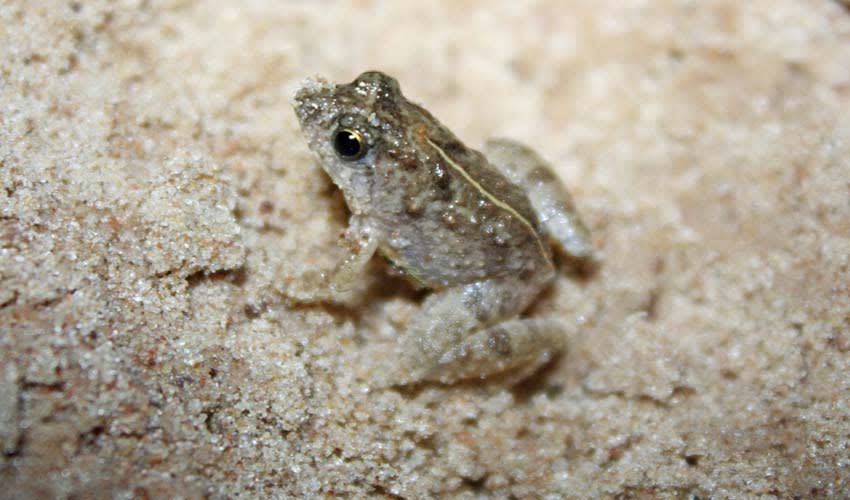Phrynobatrachus – Puddle frogs
Among the first frogs you’ll hear after a heavy downpour
One of the most widespread and adaptable groups of frogs across sub-Saharan Africa. With more than 90 recognized species, they live everywhere from rainforests and savannas to highland streams and, of course, puddles—the small, temporary pools that give them their common name. These frogs are generally small, many only a few centimeters long, with slender bodies, pointed snouts, and long legs that make them look more delicate than their chunkier cousins like the rain frogs. Their colors are usually earthy browns, grays, or olive tones, which help them blend into mud, grass, or leaf litter around shallow water.
While many frogs rely on permanent ponds or rivers, Phrynobatrachus species specialize in making the most of puddles that form after seasonal rains. These puddles may last only a few weeks, so the frogs’ breeding cycle is fast and efficient. Males gather quickly after rains to call, producing short trills or peeps that echo across the puddles. Females lay eggs in the water, and the tadpoles develop rapidly, racing against the clock before the puddles dry up. This remarkable adaptation allows puddle frogs to thrive in environments where other amphibians would struggle.
Despite their small size, puddle frogs play a big role in ecosystems. They are active insect hunters, feeding on mosquitoes, flies, ants, and beetles, which makes them natural pest controllers. Their abundance also makes them an important food source for birds, snakes, and small mammals. Some species even live at surprisingly high altitudes, surviving in cooler mountain climates, while others flourish in hot, lowland grasslands. This wide range of habitats highlights their resilience and adaptability, setting them apart from many frog groups that are far more specialized.
Species in this genus
Boutry river frog
A tiny, living indicator of ecosystem health—when the river thrives, so does the frog
Natal dwarf puddle frog
Nicknamed “the quacking frog”, since it really does sound a bit like a tiny duck



